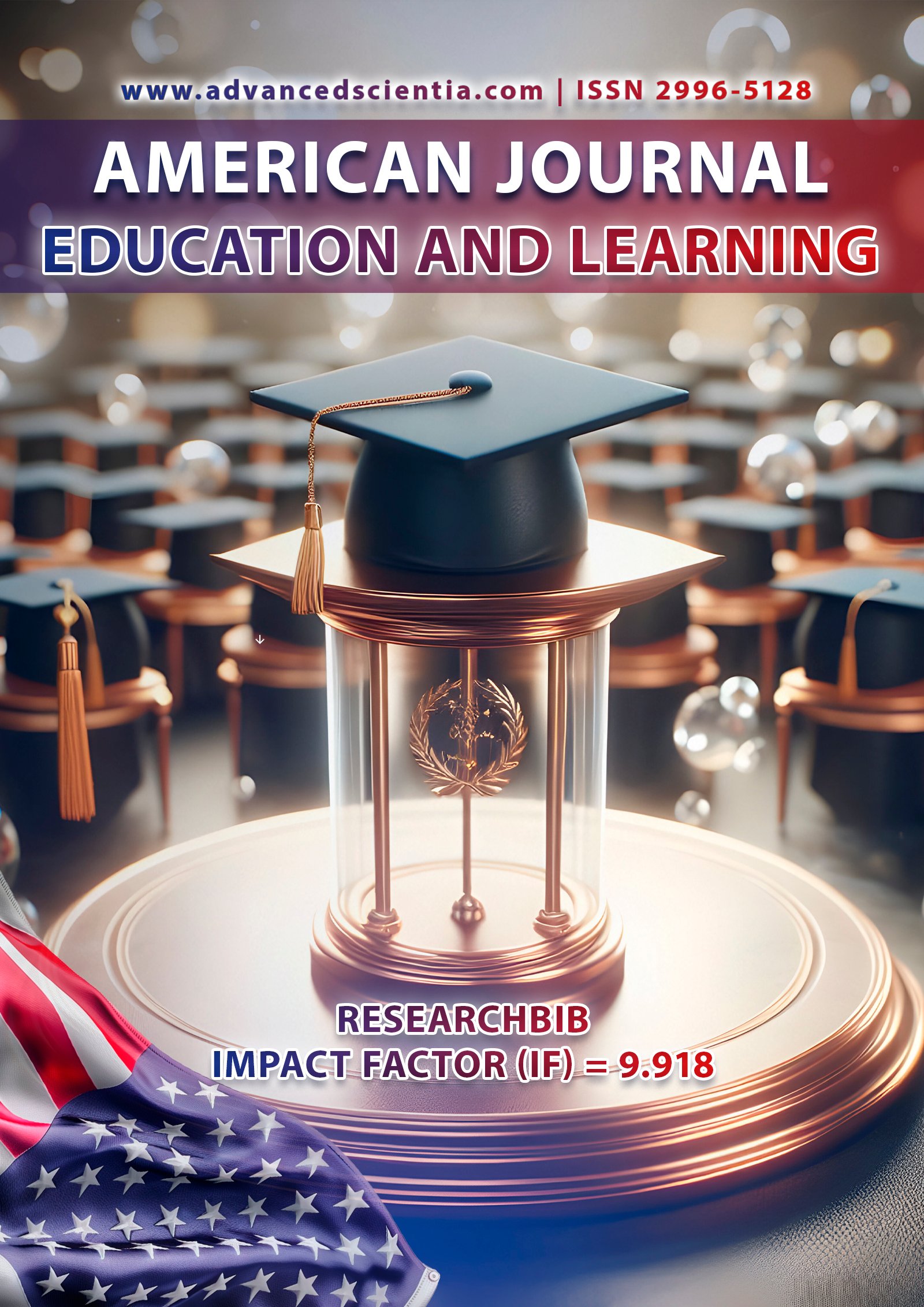PHYSICS PRACTICUM: THE RELATIONSHIP BETWEEN PROBLEM SOLVING AND EXPERIMENTAL ACTIVITY
Abstract
It is proposed to design the content of a physics practicum for students in grades 9-11 based on the interrelation of two main types of practical learning activities in physics - problem-solving and experimental activity. The physical model of the studied phenomenon or process acts as the central, connecting link in solving the problem and the experiment. The design of the practicum content is based on the following sequence: in the process of solving the problem, first a physical, then a mathematical model of the studied process or phenomenon is constructed, which allows obtaining functional dependencies, the physical meaning of which is verified in an experiment. As a result of the experimental verification, there may be a need to refine the developed physical model and conduct a new verification. Students practice and gain a deeper understanding of the limits of application of laws and models. A practicum can be organized both in the system of additional education, for example, at the university level, and in general education in extracurricular activities.
References
[1] Xushvaqtov O‘.N., Keramik supercondensatorlar va uning texnikada qo‘llanishi mavzusini o‘qitish// “O‘zbekistonda ilm-fanning rivojlanish istiqbollari” mavzusidagi ko‘p tarmoqli, xalqaro ilmiy-amaliy anjumani materiallar to‘plami 2022-yil 30-noyabr, 863-566 b.
[2] Khushvaktov U.N., Teaching topics related to solid-state physics in high school on the principle of continuity // International Journal of Education, Social Science & Humanities. Finland Academic Research Science Publishers ISSN: 2945-4492, Volume-12 |Issue-6| 2024 Published: |22-06-2024| Scientific Journal Impact Factor (SJIF) = 8.09, P. 1584-1592.
[3] Khushvaktov U.N., Methods of teaching the topic "Crystalline and amorphous bodies" in high school // International Journal of Education, Social Science & Humanities. Finland Academic Research Science Publishers ISSN: 2945-4492, Volume-12 |Issue-6| 2024 Published: |22-06-2024| Scientific Journal Impact Factor (SJIF) = 8.09, P. 1575-1583.
[4] Xushvaqtov N., Xushvaqtov O‘.N., Umumiy o‘rta ta’lim maktablarida fizika fanidan uy laboratoriya ishini tashkil etish va bajarish // Xalqaro ilmiy forum. Ko‘p tarmoqli ilmiy-amaliy anjuman materiallari. Toshkent. 2023-yil. 13-yanvar. 962-965 bet.
[5] Xushvaqtov O‘.N., Jalolov S.E., Yakka plastina usuli bilan issiqlik o‘tkazuvchanlikni aniqlash// Xalqaro ilmiy forum. Ko‘p tarmoqli ilmiy-amaliy anjuman materiallari. Toshkent. 2023-yil. 13-yanvar. 966-968 bet.
[6] Khushvaktov U.N., Interconnected training in laboratory and practical classes in solid state physics // ACADEMICIA: An International Multidisciplinary Research Journal ISSN: 2249-7137, Vol. 12, Issue 05, May 2022. Scientific Journal Impact Factor (SJIF) 8.252, P. 134-146.
[7] Khushvaktov U.N., Use of the membership principle in studying solid physics at secondary school // ACADEMICIA An International Multidisciplinary Research Journal ISSN: 2249-7137, Vol. 11, |Issue 6| June 2021. - Scientific Journal Impact Factor (SJIF) 7.492, P. 526-531.
[8] Қаландаров Э.Қ., Хушвақтов Ў.Н. Қаттиқ жисмлар физикасини янги педагогик технологиялар асосида ўқитиш асослари// Муғаллим ҳам узлуксиз билимлендириу илмий-методикалық журнали. – Нукус, 2018. -№ 3-сон. 122-127 б. (13.00.00. № 20)
[9] Xushvaqtov O‘.N., Qattiq jismlar fizikasini o‘qitish uchun animatsion aralash reallik modellari // Fizika fanini axborot va innovatsion texnologiyаlar muhitida o‘qitishning zamonaviy tendensiyalari: Muammo va yechimlar mavzusidagi. Respublika ilmiy-amaliy konferensiya materiallar to‘plami. Navoiy shahri – 2023. 279-284 bet.
[10] Ural Norkobilovich Khushvaktov. Improving correlation in solving laboratory work and issues related to solid state physics in high school // American journal of education and learning ISSN: 2996-5128 (online) | ResearchBib (IF) = 9.918 Impact factor Volume-2| Issue-5| 2024 Published: |30-12-2024|. P. 173-179.
[11] Xushvaqtov O‘.N., Umumiy o‘rta ta’lim maktablarida qattiq jismlar fizikasiga oid amaliy mashg‘ulotlarni takomillashtirish // “Fizika, Matematika va Informatika” Ilmiy-uslubiy jurnal. 2022 2-son. 01.04.2022-y. 38-44 b. (13.00.00. № 2)
[12] Xushvaqtov O‘.N. Umumiy o‘rta ta’lim maktablarida qattiq jismlar fizikasining rivojlanish metodologiyasi metodologik asoslari//“O‘zMU XABARLARI” Mirzo Ulug‘bek nomidagi O‘zbekiston Milliy Universiteti Ilmiy Jurnali. 2024, [1/7/1] ISSN 2181-7324. 218-221 bet.
[13] Хушвақтов Ў.Н., Умумий ўрта таълим мактабларида қаттиқ жисмлар турларини кўргазмалилик тамойилидан фойдаланиб ўрганиш//Ilm sarchashmalari” Urganch davlat universitetining ilmiy-nazary, metodik jurnali. 114-118 bet.
[14] Khushvaktov U.N., The importance of interdisciplinary integration of subjects related to solid state physics with the natural sciences in their high schools // International Journal of Education, Social Science & Humanities. Finland Academic Research Science Publishers ISSN: 2945-4492 (online), Volume-11| Issue-10| 2023 Published: |22-10-2023| Scientific Journal Impact Factor (SJIF) = 7.502, P. 1276-1279.
[15] Xushvaqtov O‘.N., Umumiy o‘rta ta’lim maktablarida PhET (fizika ta’limi va texnologiya)si yordamida “Elastiklik va Guk qonuni”ni o‘qitish // “Yangi O‘zbekistonda innovatsion tadqiqotlar” xalqaro ilmiy-amaliy konferensiya doirasidagi “Intellektual izlanuvchi” xalqaro ko‘rik tanlovi 3-qism. O‘zbekiston – 2023, 647-649 b.
[16] Xushvaqtov O‘.N., “Qattiq jismlar fizikasi”ni o‘qitish jarayonida o‘quvchilarning kreativ kompetentligini rivojlantirish// “XALQ TA’LIMI” O‘zbekiston Respublikasi Maktabgacha va Maktab Ta’limi Vazirligining Ilmiy-metodik jurnali. ISSN 2181-7839. 2023 2-son (Mart-Aprel), 67-71 b. (13.00.00. № 17).
[17] Xushvaqtov O‘.N., Yakka plastina metodi yordamida qattiq jismlarning issiqlik o‘tkazuvchanligini aniqlash // «Ilm-fan fidokori» mavzusidagi xalqaro ilmiy-amaliy ko‘rik tanlovi materiallari (29-dekabr 2022-yil) – T.: Farg‘ona sh. 319-326 b.
[18] Xushvaqtov O‘.N., Umumiy o‘rta ta’lim maktablarida “Qattiq jismlar fizikasi”ni o‘qitishni takomillashtirish omillari// Science and innovation international scientific journal VOLUME 1 ISSUE 8 UIF-2022: 8.2 | ISSN: 2181-3337, 1115-1121 b.
[19] В.В. Майер, Е.И. Вараксина, Б.А. Хайдаров Школьные демонстрационные опыты при изучении прямолинейного движения (9-12). Журнал (Учебная физика 2022 №4) https://www.akc.ru/itm/uc_hebnay_a-fizika/
[20] В.В. Майер, Е.И. Вараксина, Б.А. Хайдаров. Прибор для стробоскопического фотографирования механических движений (13-22). Журнал (Учебная физика 2022 №4) https://www.pressa-rf.ru/cat/1/edition/e79876/
[21] В.В. Майер, Е.И. Вараксина, Б.А. Хайдаров. Стробоскопический метод исследования прямолинейного движения (3-10). Журнал (Учебная физика 2023 №2)https://www.pressa-rf.ru/cat/1/edition/e79876/
[22] Xaydarov. B. A. Tillaboev. K. T. Usmonov. SH. F. Axborot texnologiyalar yonalishi talabalariga Fizika fani. Zamonaviy fizika va astronomiyaning muammolari, yechimlari, oq‘itish uslublari. Nizomiy nomidagi TDPU 2024 yy https://t.me/maqola_FAbot, Arktur2012@mail.ru
[23] Xaydarov. B. A. Zamonaviy fizika va astronomiyaning muammolari, yechimlari, oq‘itish uslublari. Nizomiy nomidagi TDPU 2024 y. https://t.me/maqola_FAbot, Arktur2012@mail.ru
[24] Б. А. Хайдаров. Экспериментальная проверка решения физической задачи. FARS INTERNATIONAL JOURNAL OF EDUCATION, SOCIAL SCIENCE & HUMANITIES. 2024.08.09.






















